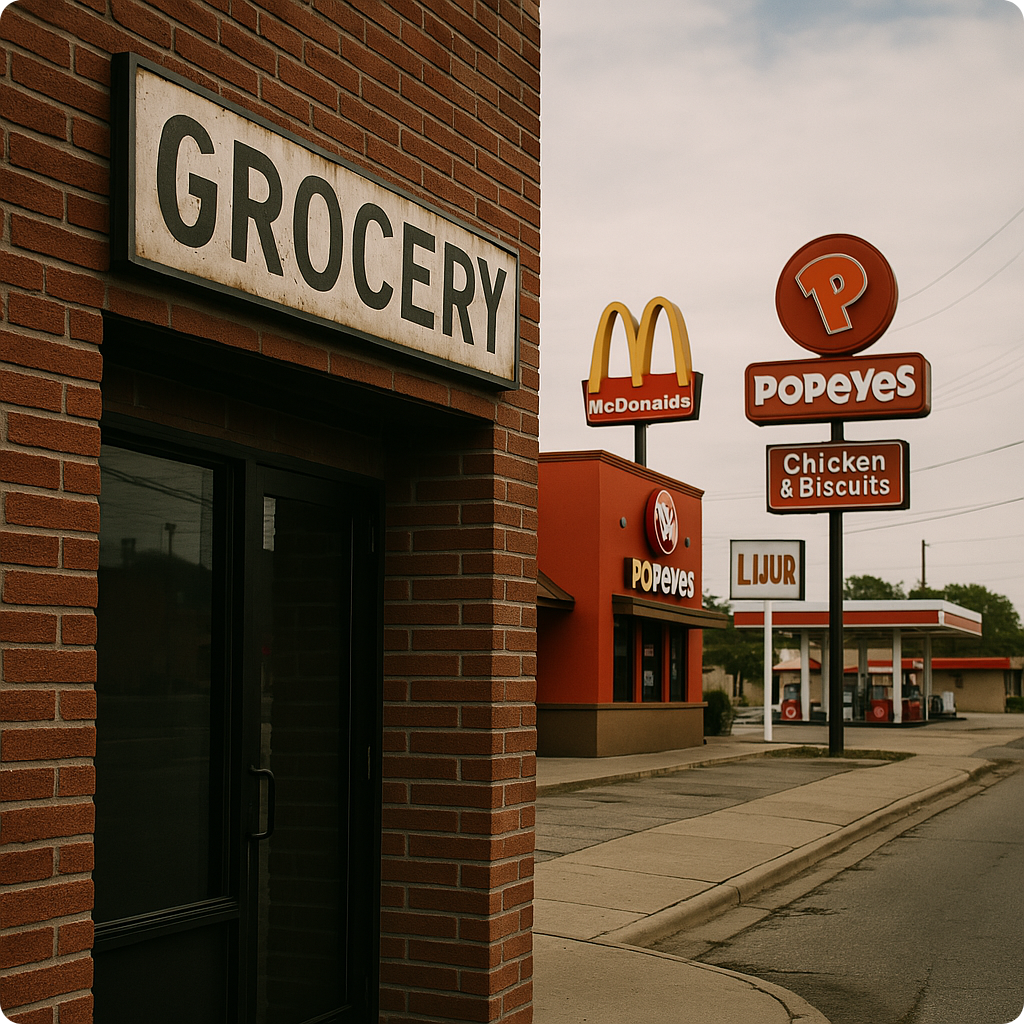Food Swamps Are Real—And They’re Killing Us

Here’s a stat that should stop you mid-bite:
In some U.S. neighborhoods, there are 4 fast-food joints for every 1 grocery store. That’s not bad luck. That’s a food swamp.
We talk a lot about food deserts—places with little to no access to fresh, healthy food. But what if food is available… it’s just all bad?
That’s the reality for millions living in food swamps.
Food Desert vs. Food Swamp: What’s the Difference?
Let’s keep it real:
- Food Desert: No access to affordable, nutritious food. Think: no grocery store within miles.
- Food Swamp: Grocery stores exist, but they're drowned out by fast food, liquor stores, gas stations, and corner stores pushing ultra-processed junk.
In a food desert, you’re starving for options.
In a food swamp, you're surrounded in a food swamp with high-calorie, low-nutrient, addictive trash.
Both are rooted in the same thing: systemic inequality.
The Health Receipts: What Food Swamps Cost Us
Living in a food swamp isn’t just inconvenient—it’s deadly.
- Higher obesity rates
- Increased risk of diabetes, heart disease, and high blood pressure
- Mental health struggles, linked to poor nutrition
- Shorter life expectancy—yes, seriously
Your neighborhood shouldn't be a predictor of your health. But in food swamps, it often is.
And the most impacted?
Black, Brown, and low-income communities. This isn’t accidental. It’s layered in redlining, disinvestment, and decades of policy neglect.
This Isn’t New: A Look Back
Back in the 1960s and 70s, soul food was about survival. Stretching ingredients. Feeding the block. It was culture. It was resilience. But fast forward to now?
Cheap calories have replaced cultural nourishment.
Corporations flood communities with what sells fast, not what heals.
And hip-hop’s been sounding the alarm for years:
“The hood don't got Whole Foods, they got no food.” — Common
How Do We Flip the Script?
We need system change and community power. Here’s what that looks like:
1. Support local food justice efforts.
Organizations building community gardens, mobile markets, and food co-ops need more than applause—they need funding and volunteers.
2. Pressure local government.
Push for zoning laws that limit fast food density and increase support for healthy food businesses.
3. Reclaim food culture.
Turn to your roots. Bring back cooking with intention. Share recipes. Teach the next generation how to nourish themselves.
4. Speak up.
If your city council isn’t talking about food access, you should be. Public comment. Social media. Neighborhood meetings. Make food justice a loud issue.
Now What?
- Ask yourself: What’s around your block? A grocery store or a swamp?
- Share this article with someone who cares about their community.
- Subscribe to The Healthy Project Presents: The Remedy to stay informed and inspired.
And tell us:
What does food justice look like where you live?
Hit reply. Drop a comment. Pull up to the convo.





